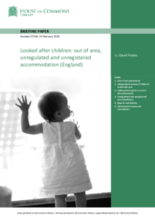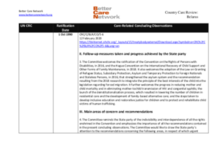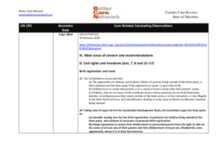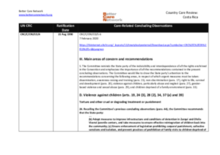Displaying 221 - 230 of 1787
This briefing provides information on two separate but related topics concerning looked after children in England: out of area and distant placements and unregulated and unregistered accommodation
This briefing gives a very broad overview of the legislative framework for child protection in England.
This WHO–UNICEF–Lancet Commission lays the foundations for a new global movement for child health that addresses the two crises of climate change and predatory commercial exploitation, and presents high-level recommendations that position children at the centre of the Sustainable Development Goals (SDGs).
This country care review includes the care related Concluding Observations adopted by the Committee on the Rights of the Child.
This country care review includes the care related Concluding Observations adopted by the Committee on the Rights of Persons with Disabilities and the Committee on the Rights of the Child.
This Country Care Review includes the care-related concluding observations adopted by the Committee on the Rights of the Child as well as ratification dates.
This Country Care Review includes the care-related concluding observations adopted by the Committee on the Rights of the Child and the Committee on the Rights of Persons with Disabilities, as well as other care-related concluding observations, ratification dates, and links to the Universal Periodic Review and Hague Intercountry Adoption Country Profile.
This country care review includes the care-related Concluding Observations adopted by the Committee on the Rights of Persons with Disabilities and the Committee on the Rights of the Child.
This country care review includes the care related Concluding Observations adopted by the Committee on the Rights of Persons with Disabilities and the Committee on the Rights of the Child.
One of several reports produced as part of the Scottish Independent Care Review, this report demonstrates the current legislative framework of the Scottish care system and how it must change to achieve The Promise.










